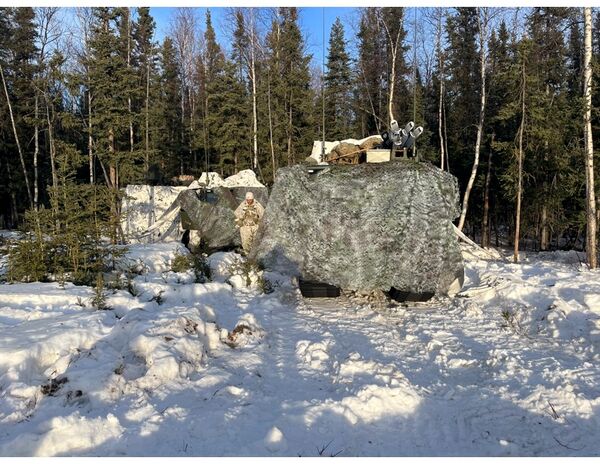
A convoy of Cold Weather All-Terrain Vehicles perform command-and-control operations for the Joint Pacific Multinational Readiness Center training rotation in Fort Greely, Alaska. (Janes/Meredith Roaten)
Life in the Arctic can shift from -40ºF with 20 to 30 mph winds one week to the snow melting away as temperatures climb closer to 40ºF every day the next week. This kind of chaos makes the Joint Pacific Multinational Readiness Center (JPMRC) 24-02 training rotation an excellent trial for new US Army equipment and operations in contested environments, top service officials told Janes .
Investment in the region has remained stagnant, but nonetheless, formations in the region like the 11th Airborne Division are trying to grow beyond a support capacity and embrace the Arctic warfare mission described in Department of Defense (DoD)- and service-level strategies for addressing the growing threat of a contested Arctic.
In an attempt to take the Arctic more seriously, President Joe Biden's administration released a National Strategy for the Arctic Region in 2022 and then an implementation plan for that strategy in 2023. It calls for more military co-operation with allies in the region and increasing “our focus on combined exercises and training”.
The administration also calls out the 11th Airborne Division by name, saying that it needs to become an advanced “Arctic-capable force” as a “foundation” for Arctic capability, according to the document. However, much of the plan revolves around civilian architecture, diplomatic efforts, and commercial ventures, leaving the question of tangible support for defence forces open.
Russian activities have been more frequent throughout the region in recent years. In October 2023 Russia performed at least three missile tests in the Arctic, according to the Center for Strategic and International Studies (CSIS) military activity tracker.
Looking to read the full article?
Gain unlimited access to Janes news and more...







